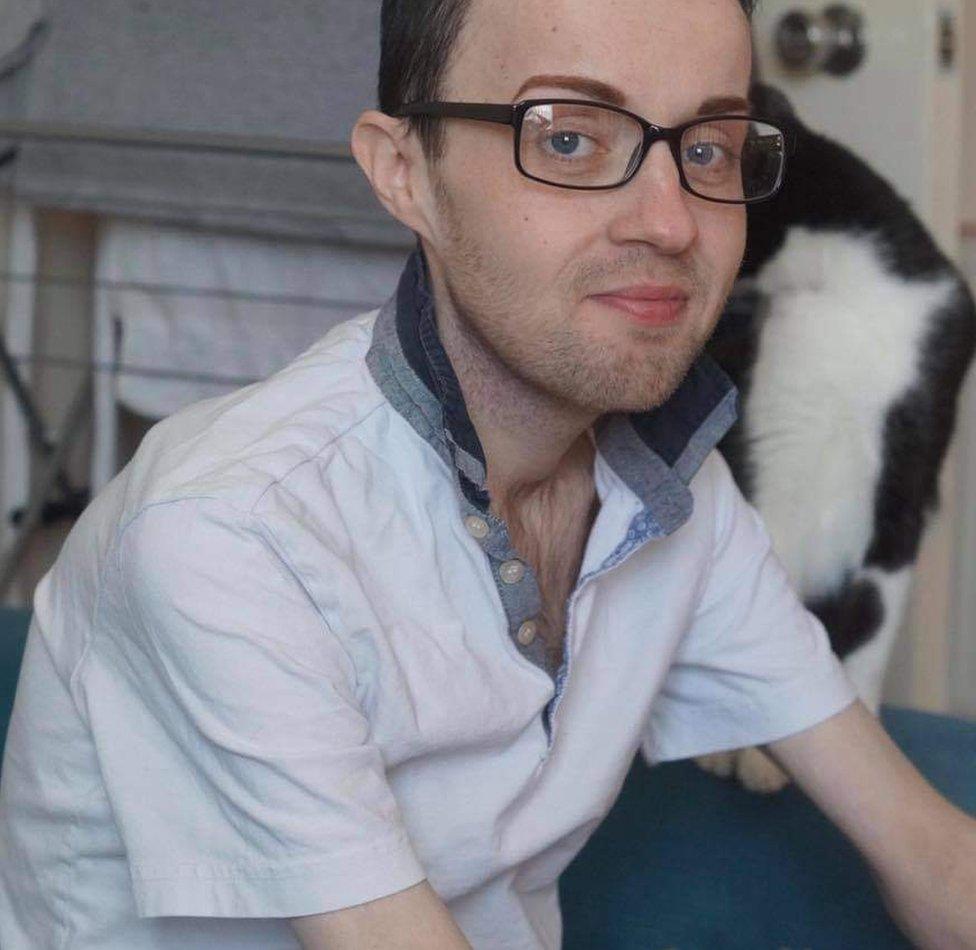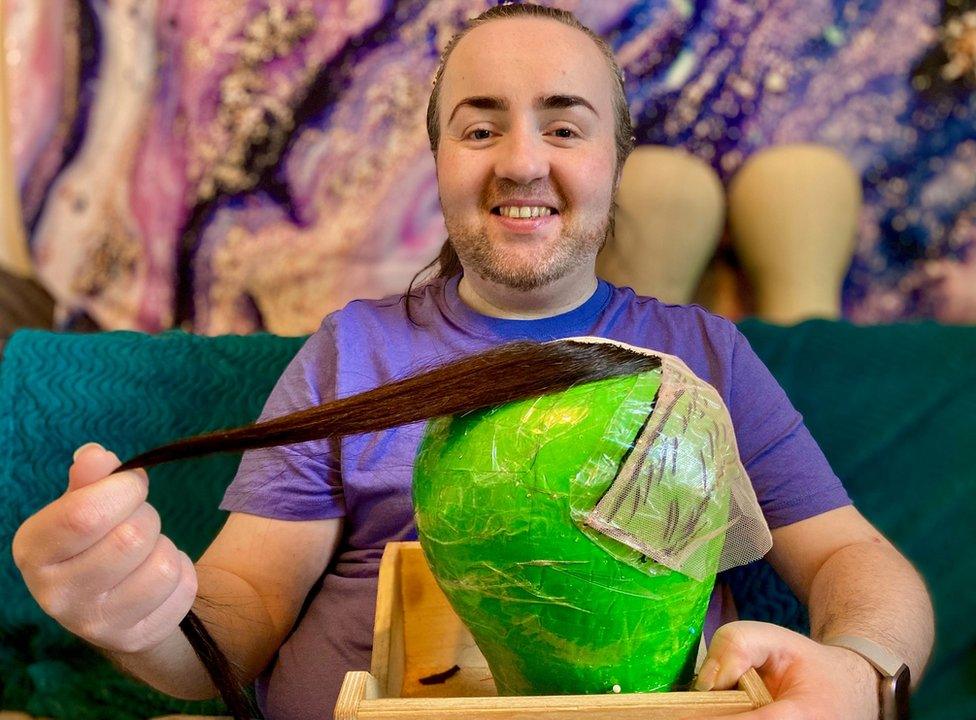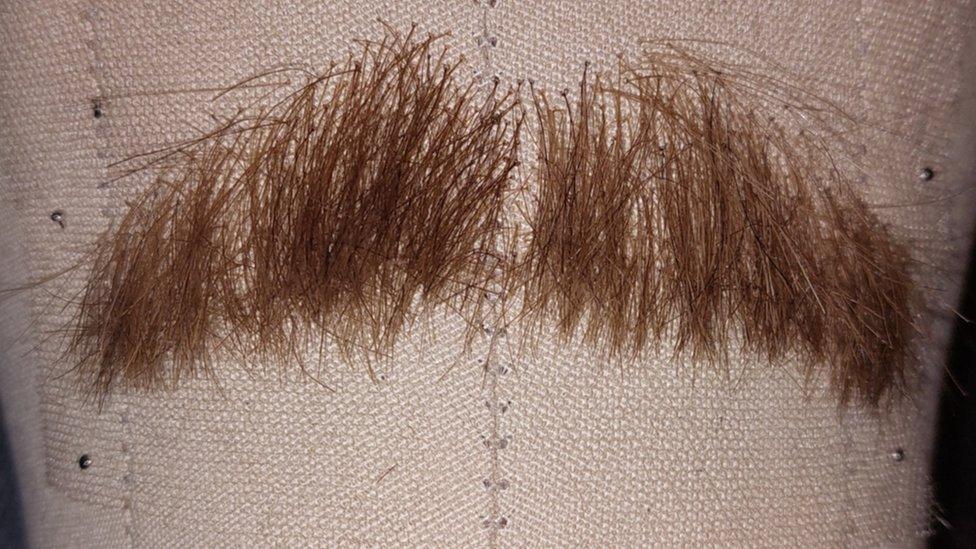I became a wigmaker after my hair fell out
- Published
Tips and tricks for stitching wigs
Alcohol abuse left Will Venus so malnourished that they lost their hair, and started looking for a way to cover it up.
But the 34-year-old thought the wigs available online looked "fake" - so decided to find out how to make them instead.
Now Will, who uses the pronoun "they", is crafting a range of wigs from their home in Edinburgh.
Will was in their late 20s when their hair began to fall out in 2016.
The alopecia had been caused by pancreatitis, which was a result of alcoholism.
"I was in and out of hospital for a year. I was throwing up 30 times a day due to my pancreatitis and this left me very malnourished," said Will.
"I would get flare ups, which caused really intense pain and I would be given morphine while being rushed to hospital.
"I was so malnourished my body didn't need hair, so it dropped out."

Will Venus lost a lot of weight while ill
Will's beard became very sparse and they found hair on the pillow in the mornings.
"My hair was my thing. I had thick glossy hair, so when it fell out it felt like I was losing my identity and it was like losing myself a bit.
"I had a long fringe which was swept back and the sides were below the ear.
"I was really upset when it started to go because it was like saying goodbye to a part of you."
Will was given a prescription drug that allowed them to eat small amounts.
They have been in recovery ever since, and have not drunk alcohol for seven years.

Will knots every single hair into Swiss lace using real hair - the canvas wig block is green so they can see the holes in the Swiss lace
Will tried looking online for wigs, but felt that they were all "very unflattering".
"They looked wiggy and fake. Even some of the real hair ones looked awful quality."
Will set out to learn to how make wigs, but could not find any in-person courses anywhere in Scotland or the north of England.
Their partner encouraged Will to persevere, and they eventually found an online course run by teacher Marquetta Breslin in Las Vegas.
After completing the course, Will said: "I started making pieces for myself and posting them on my Instagram page.
"Then Marquetta said she saw something in me when she saw my videos and gave me her premium package upgrade for free.
"Nobody had ever given me a chance with anything before that. I was so happy that I was getting to learn so much and how to make such realistic wigs."
The process involved knotting every single hair into Swiss lace.

Will continued to wear wigs even after their hair grew back
Although Will's hair grew back it has started thinning again due to alopecia, so they are planning a new wig.
"I'm less worried this time around because I'm privileged to know I can make a wig to cover it."
Will makes beards, chest wigs, arm wigs and moustaches.
These are made for people with alopecia, people having chemotherapy, people with trichotillomania - where they pull their own hair out through anxiety - and for the transgender community.
Will takes between eight hours and 100 hours to make the hair pieces and wigs.
"Where there is hair, I can replace it," Will said.
The process uses real hair which can be bought from factories all over the world.

Will also makes moustaches
"White hair is the most expensive because it's not often people with white hair grow their hair long enough for wig makers to be able to use.
"Chest hair is the most difficult because the hair grows in all different directions.
"It's the only skill I've learned that I'm good at and that I enjoy, and that I can use to help people."
Will has made wigs and hair pieces for people all over the UK, as well as Spain and France.
"Wig making was a dying art but now it's growing because of popular culture. Celebs wear wigs all the time.
"My idol is Lady Gaga, I take my inspiration from her."